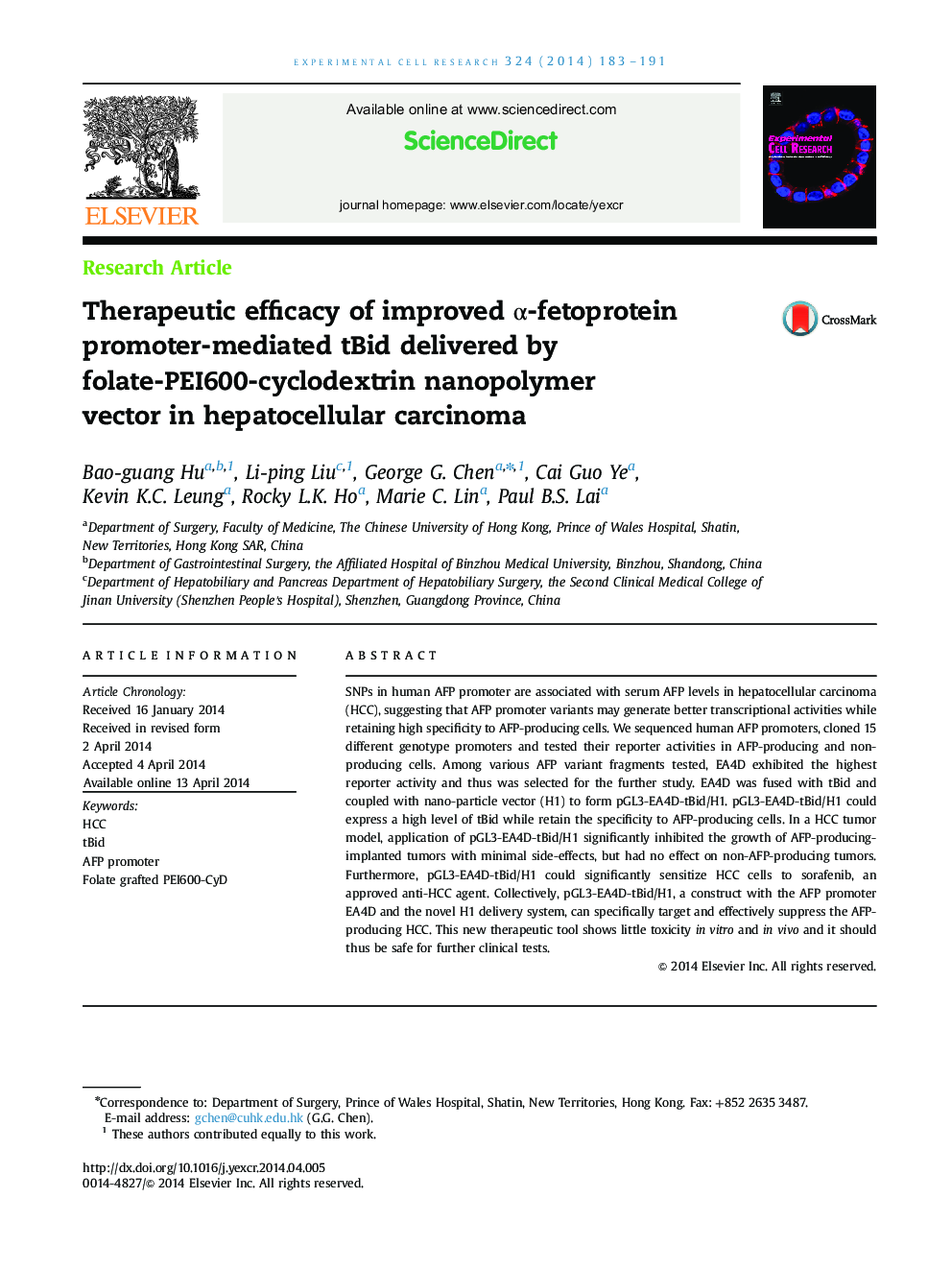| کد مقاله | کد نشریه | سال انتشار | مقاله انگلیسی | نسخه تمام متن |
|---|---|---|---|---|
| 2130313 | 1086550 | 2014 | 9 صفحه PDF | دانلود رایگان |

• The nano-particle vector H1 has advantages in mediating gene therapy construct pGL3-EA4D-tBid for HCC treatment.
• pGL3-EA4D-tBid/H1, a construct with the AFP promoter EA4D, can specifically target the AFP-producing HCC.
• pGL3-EA4D-tBid/H1effectively suppresses the proliferation and growth of AFP-producing HCC.
• This novel pGL3-EA4D-tBid/H1 therapeutic tool shows little toxicity in vitro and in vivo.
SNPs in human AFP promoter are associated with serum AFP levels in hepatocellular carcinoma (HCC), suggesting that AFP promoter variants may generate better transcriptional activities while retaining high specificity to AFP-producing cells. We sequenced human AFP promoters, cloned 15 different genotype promoters and tested their reporter activities in AFP-producing and non-producing cells. Among various AFP variant fragments tested, EA4D exhibited the highest reporter activity and thus was selected for the further study. EA4D was fused with tBid and coupled with nano-particle vector (H1) to form pGL3-EA4D-tBid/H1. pGL3-EA4D-tBid/H1 could express a high level of tBid while retain the specificity to AFP-producing cells. In a HCC tumor model, application of pGL3-EA4D-tBid/H1 significantly inhibited the growth of AFP-producing-implanted tumors with minimal side-effects, but had no effect on non-AFP-producing tumors. Furthermore, pGL3-EA4D-tBid/H1 could significantly sensitize HCC cells to sorafenib, an approved anti-HCC agent. Collectively, pGL3-EA4D-tBid/H1, a construct with the AFP promoter EA4D and the novel H1 delivery system, can specifically target and effect
Journal: Experimental Cell Research - Volume 324, Issue 2, 10 June 2014, Pages 183–191